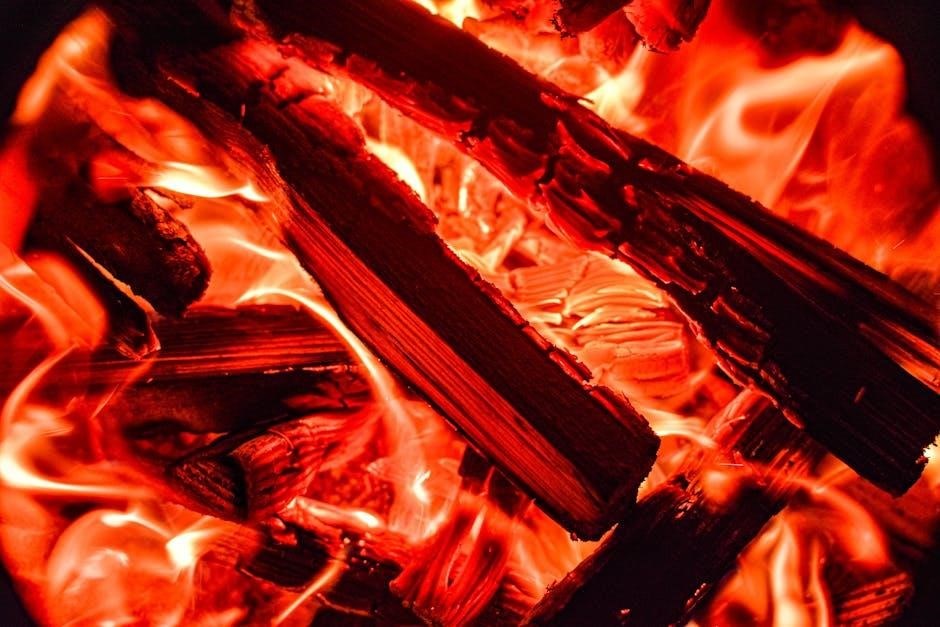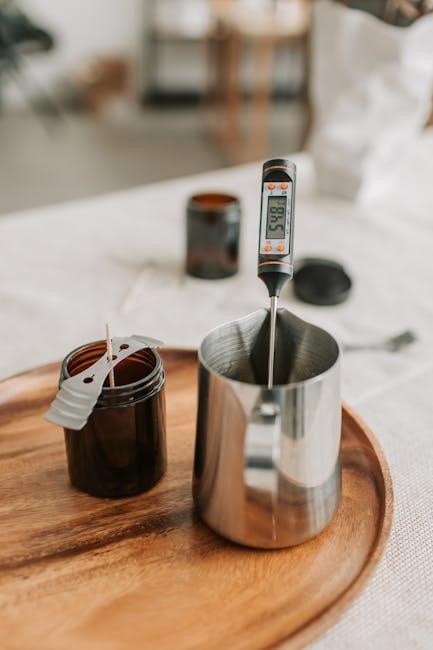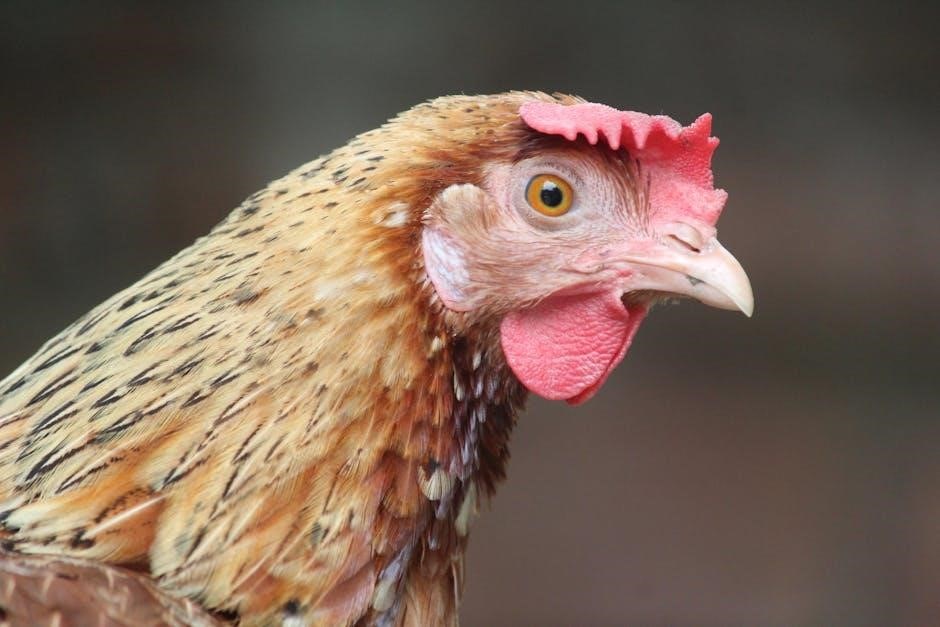A printable heat press temperature guide is essential for achieving precise results in heat transfer projects․ It outlines optimal settings for materials like HTV, sublimation, and DTF, ensuring consistent outcomes and avoiding common issues․
1․1 Importance of Temperature Settings in Heat Pressing
Accurate temperature settings are vital for achieving professional-quality results in heat pressing․ Incorrect temperatures can lead to issues like bubbling, adhesion problems, or damaged materials․ Proper heat settings ensure optimal transfer of designs, prevent overheating or underheating, and maintain material integrity․ A well-calibrated heat press guarantees consistent outcomes, making it essential to follow recommended guidelines for specific materials and projects․ This ensures durability and a professional finish for your creations․
1․2 Overview of Materials Covered in the Guide
This guide covers a wide range of materials, including heat transfer vinyl (HTV), sublimation, direct-to-film (DTF), laser transfer paper, and screen-printed transfers․ It also addresses specific substrates like ceramic mugs, polyester fabric, and glass tiles․ Each material has unique requirements, and the guide provides tailored settings to ensure the best results․ Whether you’re working with iron-on designs or sublimation dyes, this guide offers a comprehensive reference for optimal heat press performance․
1․3 Benefits of Using a Printable Temperature Guide
A printable temperature guide simplifies the heat pressing process by providing quick access to optimal settings․ It helps achieve precise results and avoid overheating or underheating․ The guide ensures consistency across projects and serves as a handy reference, reducing trial and error․ Laminating it makes it durable and easily accessible, allowing for efficient workflow and professional-quality outcomes every time․ It’s an indispensable tool for crafters and professionals alike․
Heat Transfer Vinyl (HTV) Temperature Settings
Optimal HTV settings typically range from 300°F to 320°F for 10-20 seconds with medium to high pressure, followed by a cold peel for durable, vibrant results․
2․1 Basic HTV Temperature and Time Guidelines
For standard HTV, recommended temperature settings range from 300°F to 320°F (149°C to 160°C) with press times of 10 to 20 seconds․ Apply medium to high pressure and perform a cold peel for best results․ Preheating the base material for 5 seconds ensures optimal adhesion․ These settings ensure vibrant, durable designs․ Always refer to the manufacturer’s guidelines for specific vinyl types, as settings may vary slightly between brands․
2․2 Specialized HTV Types (Glitter, Holographic, Flocked)
Specialized HTV types require adjusted settings for optimal results․ Glitter HTV typically needs 300°F to 320°F (149°C to 160°C) for 15 to 20 seconds with high pressure and a cold peel․ Holographic and Flocked HTVs often use similar temperature ranges but may require slightly longer press times․ Always consult the manufacturer’s guidelines, as specific brands may vary․ These settings ensure the unique textures of these HTVs are preserved while achieving a strong bond to the substrate․
2․3 Pressure and Peel Recommendations for HTV
Applying the correct pressure and peel method is crucial for HTV success․ Most HTVs require high pressure to ensure proper adhesion․ A cold peel is often recommended for standard and glitter HTVs, while warm peels may work for certain finishes․ Always follow the manufacturer’s instructions, as specific HTV types may require variations․ Proper pressure and peel techniques ensure a durable, long-lasting finish and prevent common issues like bubbling or incomplete adhesion․

Sublimation Printing Temperature Guide
For optimal sublimation results, apply temperatures between 370-400°F and press times of 150-210 seconds․ Settings may vary based on substrates like ceramic mugs or polyester fabric․ Using a heat press mat ensures even transfer and prevents wrinkles, enhancing overall print quality and durability․
3․1 Optimal Temperature and Time for Sublimation
The ideal temperature for sublimation ranges from 370°F to 400°F, with press times between 150 to 210 seconds․ For ceramic mugs, use 400°F for 200-240 seconds, while polyester fabric requires 375°F for 35-45 seconds․ Preheating the substrate ensures even transfer․ Always use a heat-resistant tape for alignment and allow a cool peel for vibrant, durable results․ Adjust settings based on material thickness and brand recommendations for optimal outcomes․
3․2 Substrate-Specific Settings (Ceramic Mugs, Polyester Fabric)
For ceramic mugs, set the temperature to 400°F with a press time of 200-240 seconds․ Polyester fabric requires 375°F for 35-45 seconds․ Use a heat-resistant tape to secure designs and ensure even transfer․ A cool peel is recommended for both substrates to achieve vibrant, long-lasting results․ Adjust settings slightly for variations in material thickness or brand-specific recommendations to optimize sublimation outcomes․
3․3 Tips for Achieving Vibrant Sublimation Results
To ensure vibrant sublimation results, use high-quality sublimation paper and ink․ Preheat your substrate for 5 seconds to prepare it for transfer․ Secure designs with heat-resistant tape to prevent shifting․ Apply consistent pressure and avoid wrinkles․ For best results, use a cool peel to prevent color fading․ Always follow manufacturer guidelines for specific materials and adjust settings as needed for optimal outcomes․
Direct-to-Film (DTF) Printing Temperature Settings
DTF printing requires precise temperature control for optimal results․ Typically, settings range between 250°F to 300°F, depending on the material brand and thickness․ Always refer to the manufacturer’s guidelines for specific recommendations to ensure durability and vibrant color retention․
4․1 Recommended Temperature and Time for DTF Transfers
Optimal temperature for DTF transfers is typically between 250°F to 300°F, with press times ranging from 10 to 20 seconds․ Medium to high pressure is recommended to ensure proper adhesion․ It’s crucial to preheat the material for 5 seconds before applying the transfer․ A cold peel is generally advised to avoid damaging the film․ Adjust settings based on the specific DTF brand and material thickness for best results and vibrant, long-lasting colors․
4․2 Pressure and Peel Instructions for DTF
Apply medium to high pressure for DTF transfers to ensure proper adhesion․ A cold peel is recommended to prevent film damage․ Adjust pressure based on material thickness and type․ Ensure even pressure distribution to avoid uneven transfers․ Preheating the substrate for 5 seconds can improve adhesion․ Avoid over-pressure, as it may cause damage to delicate materials․ Always follow manufacturer guidelines for specific DTF products to achieve optimal results and durability․
4․3 Common Mistakes to Avoid in DTF Heat Pressing
Common mistakes in DTF heat pressing include insufficient pressure, incorrect temperature settings, and overheating․ Ensure proper pressure distribution to avoid uneven transfers․ Avoid using too high a temperature, as it can damage the film or substrate․ Ignoring manufacturer guidelines for specific materials can lead to poor adhesion․ Additionally, inconsistent peel methods (warm vs․ cold) can affect durability․ Always preheat substrates and test settings for optimal results․
Printable Heat Press Guide for Other Materials
This section covers laser transfer paper, screen-printed transfers, and ceramic/glass tiles, providing optimal temperature and time settings to ensure flawless transfers and avoid common issues like overheating or poor adhesion․
5․1 Settings for Laser Transfer Paper
Laser transfer paper requires specific temperature and time settings to ensure crisp, durable images․ Typically, a temperature of 300-350°F (150-175°C) is recommended, with a press time of 180-300 seconds․ Use heat-resistant tape for alignment and ensure the surface is even․ Avoid overheating, as it can damage the paper or substrate․ Always preheat the material and follow the manufacturer’s guidelines for best results with laser transfers․
5․2 Screen-Printed Transfer Temperature Guidelines
Screen-printed transfers typically require a temperature of 300-350°F (150-175°C) with medium to high pressure․ The recommended press time is 10-20 seconds․ A hot peel is usually preferred to ensure proper adhesion․ Preheating the substrate and using heat-resistant tape for alignment can enhance results․ Always follow the manufacturer’s instructions for specific transfer types to achieve the best outcomes․
5․3 Ceramic and Glass Tile Heat Press Settings
Ceramic and glass tiles require a temperature of 400°F (200°C) with a press time of 300-720 seconds․ Use high pressure and a cold peel for optimal results․ Ensure the tile surface is even and free of wrinkles․ Preheating the tile and using heat-resistant tape for alignment is recommended․ Always refer to the manufacturer’s guidelines for specific tile types to achieve durable, long-lasting transfers․

Cricut EasyPress Temperature Guide
The Cricut EasyPress offers precise temperature and time settings for various materials, ensuring professional-quality transfers․ Use the heat guide tool for optimal results and consistent outcomes․
6․1 EasyPress Mini Settings and Charts
The Cricut EasyPress Mini offers precise temperature and time settings for small projects․ Downloadable printable charts provide optimal guidelines for materials like iron-on, HTV, and sublimation․ Preheat your base material for 5 seconds before applying vinyl․ Use a heat-resistant mat for best results․ Charts include settings for both Cricut-branded materials and non-Cricut products like Siser HTV․ Laminating the guide ensures durability for frequent use․ Adjust settings as needed for different brands or materials․
6․2 EasyPress and EasyPress 2 Temperature Recommendations
Cricut EasyPress and EasyPress 2 share similar temperature settings, with recommendations for materials like iron-on, HTV, and sublimation․ Optimal settings range from 265°F to 400°F, depending on the material․ Use medium pressure for most projects and a cool peel for best results․ Charts are available for both machines, ensuring consistent outcomes․ Adjust settings slightly for non-Cricut materials, and always preheat your base material for 5 seconds before applying vinyl․
6․3 Using Cricut’s Online Heat Guide Tool
Cricut’s online heat guide tool provides precise temperature, time, and pressure settings for various materials and machines․ It offers tailored recommendations for EasyPress, EasyPress 2, and Mini, ensuring optimal results․ Users can access charts for different materials like iron-on, HTV, and sublimation․ The tool also allows for adjustments based on specific projects and materials, making it a versatile resource for crafters․ Printable charts are available for easy reference, enhancing workflow efficiency․
How to Use the Printable Temperature Guide Effectively
Laminate the guide for durability and keep it near your workspace․ Use it as a quick reference for settings, ensuring consistent and efficient heat transfer results․
7․1 Laminating and Organizing Your Guide
Laminate your printable temperature guide to protect it from wear and tear․ Use a laminator to encase the guide in plastic, ensuring it remains durable and easy to clean․ Organize it by punching a hole in one corner and attaching a ribbon or hanging it near your workspace․ This keeps the guide accessible and visible, allowing you to quickly reference settings without interruption․ Laminating also prevents moisture damage, making it ideal for busy crafting environments․
7․2 Referencing the Guide for Specific Projects
Referencing your printable heat press temperature guide ensures accurate settings for each project․ It provides quick access to optimal temperatures, times, and pressures for materials like HTV, sublimation, or DTF․ This consistency prevents overheating or underheating, saving time and materials․ By consulting the guide, you can efficiently match settings to your project’s needs, enhancing overall results․ It’s a reliable tool for achieving professional-quality transfers every time, tailored to specific materials and designs․
7․3 Adjusting Settings Based on Material Brands
When working with different material brands, it’s crucial to adjust your heat press settings accordingly․ While the guide provides general recommendations, specific brands like Siser or Cricut may require unique adjustments․ Always consult the material’s brand guidelines for precise temperature, time, and pressure settings․ This ensures optimal results and prevents issues like bubbling or poor adhesion․ Testing small samples and documenting findings can also help refine your settings for future projects with various brands․

Troubleshooting Common Heat Press Issues
Identify and resolve issues like bubbling or adhesion problems by checking temperature settings and material compatibility․ Adjust settings as needed to ensure proper calibration for optimal results․
8․1 Fixing Bubbling and Adhesion Problems
Bubbling and adhesion issues often arise from incorrect temperature or pressure settings․ Check your heat press guide for optimal parameters and ensure proper material preheating․ Using heat-resistant tape can help align designs accurately, minimizing air pockets․ For stubborn bubbles, lightly press with a smaller tool․ Always follow the recommended peel method (cool or warm) based on the material type․ Adjusting dwell time or temperature may also resolve adhesion problems effectively․
8․2 Resolving Underheating or Overheating Issues
Underheating or overheating can ruin transfers․ Always refer to your printable heat press guide for precise temperature settings․ Ensure the press is preheated correctly and use a heat-resistant mat for even heat distribution․ If issues persist, adjust the temperature or time slightly, based on the material brand․ Proper calibration of your heat press and regular maintenance can prevent these problems, ensuring consistent and professional results every time․
8․3 Tips for Maintaining Your Heat Press Machine
Regular maintenance ensures longevity and optimal performance of your heat press․ Clean the platens with a soft cloth and avoid abrasive chemicals․ Check temperature accuracy periodically and recalibrate if necessary․ Store the machine in a dry, cool place and use a heat-resistant mat to prevent damage․ Always refer to your printable temperature guide for specific care instructions tailored to your machine, ensuring consistent and reliable results․

Additional Tips for Optimal Heat Transfer Results
Preheat materials to ensure even heat distribution and use heat-resistant tape for precise alignment․ Always refer to your printable guide for specific temperature and peel method recommendations․
9․1 Preheating Your Material
Preheating your material ensures optimal heat transfer results by removing moisture and preparing the surface․ This step helps prevent bubbling and adhesion issues․ Use a heat press or iron to preheat for 5-10 seconds, depending on the material․ A consistent temperature ensures the vinyl or transfer adheres evenly․ Always refer to your printable guide for specific preheating times and temperatures tailored to your project materials․
9․2 Using Heat-Resistant Tape for Alignment
Using heat-resistant tape ensures precise alignment of your design on the material․ Place the tape along the edges of the transfer to secure it in position․ This prevents shifting during pressing, resulting in professional-quality outcomes․ The tape withstands high temperatures without melting or leaving residue․ It’s especially useful for intricate designs or curved surfaces like mugs․ Proper alignment enhances accuracy and saves time, ensuring your project looks flawless every time․
9․3 Importance of Cool Peel vs․ Warm Peel
The cool peel method involves waiting until the carrier sheet is no longer hot before removing it, ensuring a smooth finish and preventing bubbles․ A warm peel is done immediately, which can be faster but may risk adhesion issues․ Choosing the right peel method depends on the material and design complexity․ Cool peeling is generally recommended for delicate or intricate designs, while warm peeling suits standard materials․ Proper peeling ensures long-lasting, professional results․
A printable heat press temperature guide is crucial for achieving precise results in various heat transfer projects, ensuring optimal settings for materials like HTV, sublimation, and DTF effectively․
10․1 Summary of Key Temperature and Time Guidelines
A printable heat press temperature guide serves as a crucial tool for crafting, providing detailed settings for materials like HTV, sublimation, and DTF․ It outlines optimal temperatures (typically between 260°F to 400°F), press times (ranging from 10 to 300 seconds), and pressure levels․ Adjustments may be needed based on material brands and types․ Preheating substrates and understanding cool peel vs․ warm peel methods ensures professional-quality results consistently․
10․2 Encouragement to Experiment and Adjust Settings
Experimentation is key to mastering heat press results․ While the guide provides a foundation, actual settings may vary based on material brands and specific projects․ Test small areas first to refine temperature, time, and pressure․ Keep notes on what works best for your materials․ Even slight adjustments can make a significant difference․ Be patient and persistent—trial and error lead to professional-quality outcomes tailored to your unique crafting needs․
10․3 Final Tips for Achieving Professional-Quality Results
For professional results, always preheat materials and use heat-resistant tape for precise alignment․ Laminate your temperature guide for easy reference․ Maintain your heat press machine regularly and follow manufacturer guidelines․ Test settings on small areas before full projects․ Adjustments may vary by material brand, so keep detailed notes․ Patience and attention to detail will elevate your work, ensuring crisp, long-lasting transfers every time․



